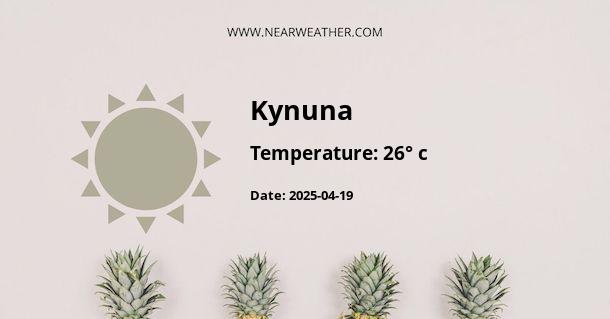Kynuna, AU - Climate and Weather Year Round
Kynuna is a small town located in the McKinlay Shire of Queensland, Australia. Situated in the heart of the outback, Kynuna experiences a unique climate and weather patterns throughout the year. Understanding the climate of Kynuna is essential for residents, travelers, and researchers alike. In this article, we will explore the climate and weather of Kynuna year-round, providing detailed information about temperature, rainfall, and other relevant factors.
Temperature
The temperature in Kynuna can vary significantly throughout the year. Summers are characterized by high temperatures, while winters are relatively mild. The table below illustrates the average monthly temperature in Kynuna:
| Month | Average High (°C) | Average Low (°C) |
|---|---|---|
| January | 36.5 | 23.9 |
| February | 35.6 | 23.4 |
| March | 34.2 | 21.6 |
| April | 31.0 | 17.6 |
| May | 27.0 | 13.3 |
| June | 23.5 | 9.8 |
| July | 23.0 | 9.1 |
| August | 25.8 | 11.8 |
| September | 30.0 | 16.0 |
| October | 33.5 | 19.7 |
| November | 35.6 | 22.3 |
| December | 36.7 | 23.7 |
As the table indicates, Kynuna experiences hot summers with average high temperatures ranging from 34.2°C in March to 36.7°C in December. Winters, on the other hand, are relatively cooler, with average high temperatures ranging from 23.0°C in July to 36.7°C in December. The average low temperatures also display a similar pattern, with the highest lows occurring during the summer months.
Rainfall
Kynuna experiences a semi-arid climate with low annual rainfall. The region is known for its dry weather and prolonged periods of drought. The table below showcases the average monthly rainfall in Kynuna:
| Month | Rainfall (mm) |
|---|---|
| January | 36.1 |
| February | 42.6 |
| March | 28.7 |
| April | 16.9 |
| May | 14.5 |
| June | 9.0 |
| July | 5.1 |
| August | 3.2 |
| September | 3.6 |
| October | 7.6 |
| November | 11.7 |
| December | 26.3 |
The data in the table reveals that the rainy season in Kynuna occurs primarily between January and March, with the highest monthly rainfall recorded during this period. However, the overall annual rainfall in Kynuna is relatively low, with an average of 215.3 mm of rainfall per year.
Extreme Weather
Kynuna, like many other parts of the Australian outback, is prone to extreme weather conditions. The region experiences both heatwaves and occasional heavy rainfall. These weather phenomena can have a significant impact on the local environment and community.
Heatwaves in Kynuna can be particularly challenging, with temperatures soaring above 40°C for extended periods. These extreme heat events can pose health risks, especially for vulnerable populations. It is essential for residents and visitors to take necessary precautions and stay hydrated during these high-temperature periods.
Heavy rainfall, although infrequent, can lead to flash flooding in the region. The arid landscape of Kynuna is not well-suited to handle large amounts of rain, and the water can quickly accumulate and cause damage. It is crucial to stay informed about weather warnings and follow any evacuation advice issued by local authorities during heavy rainfall events.
Conclusion
Kynuna experiences a unique climate and weather conditions throughout the year. With hot summers and relatively mild winters, the temperature in Kynuna can vary significantly. The region also witnesses a semi-arid climate with low annual rainfall, making it susceptible to drought. Extreme weather events, such as heatwaves and heavy rainfall, can pose challenges for the community. By understanding the climate and weather patterns of Kynuna, residents, travelers, and researchers can better prepare and adapt to the conditions of this outback town.
A - Kynuna's Latitude is -21.583330 & Longitude is 141.899994.
A - Weather in Kynuna is 26° today.
A - Climate Conditions in Kynuna shows clear sky today.
A - Humidity in Kynuna is 32% today.
A - Wind speed in Kynuna is 11.99 km/h, flowing at 117° wind direction. today.
